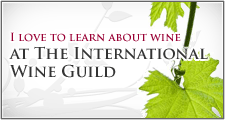After the conclusion of the 2006 World Cup, with Italy edging the French team in a 5-3 shootout, those rooting for France could probably have used some very good alcohol to numb their emotions. Luckily for the French, they needn't look far; some of the best wine is right under their noses.
Alsace, a region of France, is known for producing the greatest of white wines. Historically part of the Holy Roman Empire, the 17th century saw Alsace gradually put under French rule, eventually becoming a province of France, ripping up German ownership papers in the process.
Located 300 miles east of Paris, adjacent to Germany and Switzerland and loitering on the bank of the Rhine, Alsace is one of France's 26 wine regions.
Sunny, dry, and protectively shielded by the Vosges Mountains, Alsace maintains a very storybook quality. With white cottages and brown trim, flower boxes in windowsills, and people uttering cheery hellos while they sweep front porches, the only thing Alsace is missing is seven singing dwarfs. It is like a town manufactured purely for happiness, a town that makes visitors want to yodel.
The winemakers of Alsace, with most producers making between 20 and 30 different kinds of wine, believe that two things determine outcome: the grape that is picked and the ground it is grown on. The ground, because of the variety of soils - clay, limestone, granite, sandstone - can cause vast amounts of variety.
Almost solely devoted to manufacturing white wine, the grapes of Alsace are picked accordingly. Some of the more important grapes are Pinot Gris, Muscat, and Pinot Blanc. The Pinot Noir, not grown very often, is the lone red grape, dangling on vines and singing the lyrics to "All By Myself" for anyone who will listen.
The Riesling grape is renown as being the most prestigious of Alsace, producing very dry, broad, and full-spectrum flavors that lean towards gunflint (mmm...gunflint) and steel, with peaches, plums and lime thrown in.
Though white wines are sometimes thought of as dainty, mellow wines, the white wines of Alsace are dry, powerful, bold, and dramatic. Not containing the kind of drama portrayed on a soap opera, with one wine bottle sleeping with the other wine bottle's husband, these wines are just dramatic enough to let you know you're drinking something good.
Like most wine regions, Alsace contains a few oddities, a few facts people can use to impress their friends. For instance, all wine in Alsace, by law, must be bottled in long, tapered bottles called Flutes d'Alsace. Another quirk involves asparagus, and several restaurants that only serve the long, stem-like veggies from April to June, believing it belongs with a glass of dry Muscat.
The best Alsace wines to try are all of them. But, if you find yourself limited, the most favored ones are the Gewurztraminer, the Muscat, the Pinot Blanc, the Pinot Gris, the Riesling, and the Cremant d'Alsace. So, raise your glass, and drink away - then sing their praises from the Eiffel Tower.






